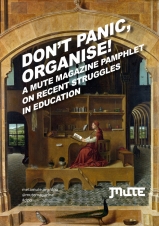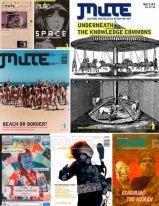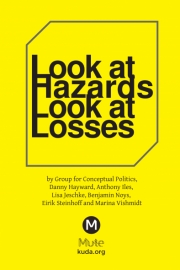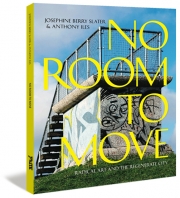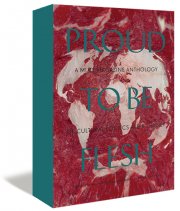Encounters in Relational Geography - Dust, Ashes, Residua
° Encounters in Relational Geography - Dust, Ashes, Residua | 2 June - 2 July, 2010
Opening1 June, 19-00 – 21.30
Project curator: Richard Appignanesi
Participant artists:
Ranko BonDumitru BudralaMarina Grzinic and Aina ŠmidIsa RosenbergerSašo SedlacekVlad NancaZbynek Baladran
The awkward question: is East Europe really accounted as European ‘added value’? Or is our currently ‘extended Europe’ fatally schizothymic. Do the East European newcomers to the Union remain disavowed migrants at the banquet edge of Western Europe? Where does the threshold of Fortress Europe actually begin, once again?
Seven East European artists have been convened as diagnosticians and researchers to explore these questions in the art exhibition, ‘Encounters in Relational Geography - Dust, Ashes, Residua’. Each artist, of acknowledged status, will address new multi-media work to the urgencies of a ‘space for life’ in the neoliberal capitalist reconstruction and reterritorialization of East Europe. Vienna, the former imperial lynchpin of trans-territorial peoples, is the ideal ‘in-between’ site for this exhibition.
The broom is our humble emblem, the symbol of everyday domestic contest that serves as cultural text for these artists in their meditations on waste and relational geography. Literally, too, the broom is the anthropological artefact linking together images of the folk collection of brooms at the Museum of Arna Jharna in Rajasthan, India, and the documentary film on present day broom-makers, the Baesi Roma group in the uplands of Romania. It is our aim to gather fresh birch twigs for our ‘sweepings of dust, ashes and residua’ at the Open Space.
The highlight of this exhibition is exemplified research, but of a type that has another resonance in East Europe, just as their contemporary art, for all of its apparent resemblance to Western tactical intermediality, has a different aesthetic texture. The artworks featured at the Open Space are also justifiably resistant to prejudice and assimilation. Our objective is not to exoticize East European artists as Europe’s ‘others’ but to comprehend how they play on an unfamiliar scale of visual assonances and on which the past and present are inflected in a phantasmic way, because the modernist utopia of Communist socialism suddenly went dead and a prefab ‘machine for living’ was left vacant, with everything stranded in uncanny residua – the architecture, the monuments in public spaces, even territoriality itself had become homeless.
A bridge of concern to ‘Encounters in Relational Geography - Dust, Ashes, Residua’ is now being built across the trauma of seismic change. But is this the prelude to a further dire transformation from ‘biopolitics to necropolitics’? The situation is critical but not hopeless, for surely these artists are themselves evidence of the trenchant and humoristic resilience of East Europe.
Artist info:
Ranko BonResidua (1976 – 2010)
This collection of notes, essays, epistles, stories, aperçus, diary entries, tales, epigrams, vignettes, parables, poems, quips, fables, snippets of conversation, maxims, slogans, quotes, jokes, and aphorisms, as well as the addenda that extend all of the above, was begun in 1976, and now contains about two million words that can be searched. At first, the writings were collected at the end of the year into yearbooks and shared with friends and acquaintances around the world. Collections of writings extending over all years appeared in print on several occasions, and many of these writings were published since 1976, most often as selections on a particular theme.
Residua is about a journey of discovery and shaping of the author’s own self. The author is inviting others to partake in his journey, as well as to consider their own journeys of discovery and shaping of their own selves. According to the author, this is art’s ultimate aim.
Marina Grzinic and Aina Šmid in collaboration with Zvonka SimzcicNaked Freedom, video, 25 min., 2010
This video work, connecting Ljubljana, Belgrade and Durham USA, presents a conceptual political space of engagement that allows for rethinking what local community is. It conceptualizes the possibility of social change under the conditions of finance capitalism and its financialization processes that permeate art, the social, political and critical discourse. The collective process of making the video “Naked Freedom” is about the enactment of social, political and collective performative practices for the screen that resonates with the performers’ own off-screen lives.
In Ljubljana seven young activists, musicians, poets and youth workers, members of the Youth Center Medvode, a village near Ljubljana, discuss capitalism, colonialism, education and the power of art as a possibility for politics. They also rethink the possibility for a radicalization of a proper life. The work is not only recognition of local youth power but as well an initiation, through the making of the video work, to social relations that will make visible those agencies seeking new possibilities.
Isa RosenbergerDANCE OF DEATH. A Rehearsal
The domination of Austrian banks in Eastern European countries, as one example of the so-called transitional processes in post-socialistic countries, is the starting point of Isa Rosenberger’s artistic research. While searching for images which could represent the abstract and immaterial economic-political interlocking and the negative spirals, in her work DANCE OF DEATH. A Rehearsal Rosenberger adopts the motive of the Dance of Death, as a kind of morbid waltz, an image of destructive flows, turns and intertwining: a dark motive that is intermitted with the aesthetic dimension of the dance.
The work DANCE OF DEATH. A Rehearsal should be interpreted as homage to the ballet of the German choreographer Kurt Jooss. In this expressionistic piece conceived as a dance macabre, Jooss translated the classical motive of late medieval art linked to motives that reflect the times of the Weimar Republic, the first Fascistic tendencies, the economic crisis, etc. Isa Rosenberger translates this first political ballet into contemporariness, but also into a proper genre, and she interweaves it with her own experiences and perspectives on the actual political and economic conditions.
Saso SedlacekAcDcWc (Merda d’Artista), floor inslattion
The project’s prototypes are nicely summarized with the upgraded work of Piero Manzoni’s work from 1961 Merda d’Artista where the artist filled cans with his excrement. The work is part of AcDcWc project which presents different prototypes of portable and stationary toilets which can one day generate electricity in the western world by recycling our own excrement.The design of individual types of AcDcWc toilet is based on Indian technology called Deenbandhu, meaning "helpful for the poor", which was developed recently by Indian technologists for the poorer classes of Indian society, who can thereby produce electricity and gas for cooking. Sedlacek's upgraded version of this technology was mostly driven by the need to adapt and use it in the so-called developed world, and it resulted in the various types of toilets.
Vlad NancaBirch broom, floor instillation
The birch broom is more traditional than the commonly seen besom broom. It is normally used in autumn to sweep leaves and usually found in poorer areas. The plan is to make such a broom in early spring with the assistance of broom- makers from the villages outside Bucharest and gather the necessary branches from the trees at a time when they are about to blossom. As soon as the broom is made, it will be placed in a jar of water and allowed to grow roots and of course little leaves. It is a natural process. From there on the broom can be planted in different gardens and grow new birch trees. This would be a different use of the broom, a slightly less direct way of cleaning, but with a more direct impact on the environment. The broom here is just a pretext.
Dumitru BudralaCurse of the Hedgehog, video (Running time: 100 minutes)
Dumitru Budrala’s film Curse of the Hedgehog is a central reference point for the ‘Encounters in Relational Geography – Dust, Ashes, Residua’ exhibition because of its unusual and poignant depiction of broom-making among the Baesi Roma people. This particular project makes a specific link between Baesi, so-called “gypsy“, broom-makers of Romania and the Arna Jharna Museum in Rajasthan, India, where the material culture of this desert area is being represented by a long-term project of collecting brooms. We come to appreciate the wit, the good humour and tenacity of these Baesi people who live on the edge of disaster. There is also interestingly a relational geographic link of ethnic descent which joins the Roma people dispersed across Europe to their origins in Rajasthan.
Zbynek BaladranBookcase, video essay, 5’ 05”
This short video essay is based on a description of a family bookcase seen through the eyes of child. From this point of view everything looks very enigmatic and the interpretation of one basic authoritarian ‘Socialistic Architecture’ book shifts the result of the child’s perception to a new consequence.
supported by:
BM:UKKERSTE FoundationStadt Wien - Kulturabteilung MA 7
° About us:Open Friday, Saturday 13.00 - 18.00 and open for the rest of the week days by appointment only.Admission free
Open SpaceZentrum fuer KunstprojekteLassingleithnerplatz 2A - 1020 ViennaAustria
(+43) 699 115 286 32
for more info: office@openspace-zkp.org
Open Space - Zentrum fuer Kunstprojekte aims to create the most vital facilities for art concerned with contributing a model strategy for cross-border and interregional projects on the basis of improving new approach.
Mute Books Orders
For Mute Books distribution contact Anagram Books
contact@anagrambooks.com
For online purchases visit anagrambooks.com


